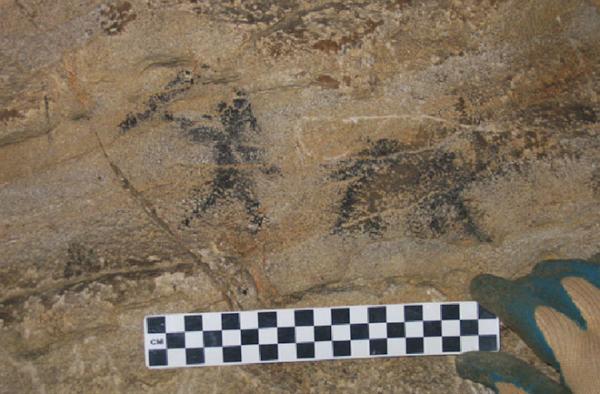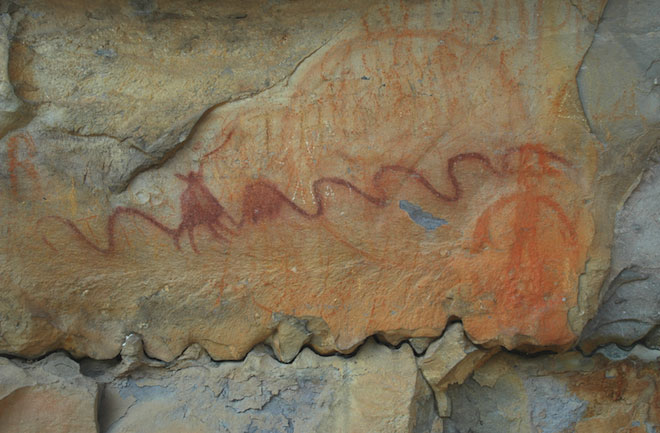
According to the study published in Antiquity, "systematic field exploration in Tennessee has located a wealth of new rock art - some deep in caves, some in the open air. The authors show that these have a different repertoire and use of color, and a different distribution in the landscape - the open sites up high and the caves down low. The landscape has been reorganised on cosmological terms by the pre-Columbian societies. This research offers an exemplary rationale for reading rock art beyond the image and the site."

Simek and his colleagues suspect that the open-air rock art and the cave art were connected as part of "an organized alteration of the landscape," with the creators of the images mapping "their conceptual universe onto the natural world in which they lived." This happened in three dimensions, with upper (celestial in nature), middle (plants and animals) and lower (darkness, death and danger) worlds matching content with where it was placed in the region, according to FoxNews.com.
Simek describes another image of a bird was incised in wet mud banks deep inside Mud Glyph Cave in Tennessee. Mud, which is associated with the origin of the world by many Southeast Native American peoples, was often used as a medium by prehistoric cave artists. This example is still plastic and therefore extremely fragile."
According to Simek, "Many of the images, like this black charcoal pictograph of a rayed circle from Dunbar Cave in Tennessee, can also be seen on portable religious objects found in temple mounds and other prehistoric religious contexts."
Co-author Sarah Sherwood of the University of the South, added, "Rock art sites are only one type of specialized activity site we see in the area; we know that people came to the Plateau to find specific foods, including animals and plants (in fact, certain native plants were domesticated in the area more than 3,000 years ago) and to obtain non-food resources; rock art was an integral part of how people conceived and used their landscapes."
To see the entire Discovery News photo gallery containing images and descriptions of the discovered cave and rock art, click here.



Reader Comments
to our Newsletter